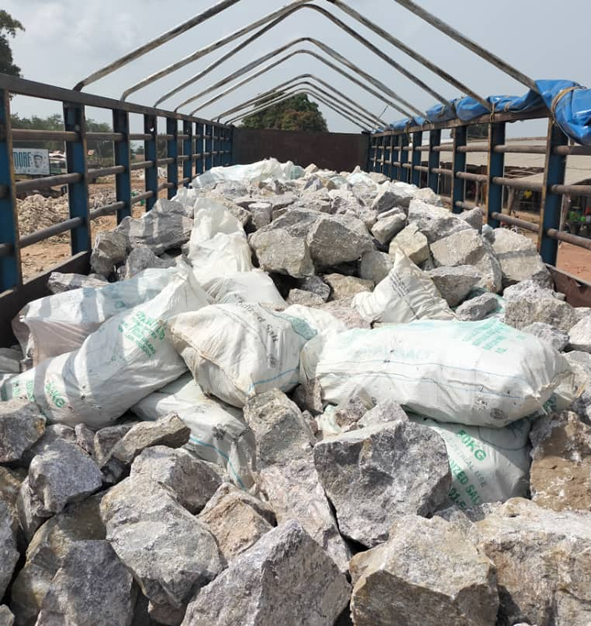

with passion

Lithium Stone

Grande J & K Allied Co. Ltd is a corporate organization duly registered
under the laws of the Federal Republic of Nigeria with Corporate
Number as: RC 7192934
Lithium ore is an element valuable for the production of glass, aluminum products, and batteries.
The discovery of lithium will encourage foreign direct investment into Nigeria and provides an opportunity for Nigeria to:
Combined beneficiation method
Applicable minerals
Lithium mining goes beyond the extraction of lithium ore; it involves the technological importance of the mineral together with its application. This refers to eco-friendly applications such as the production of electric cars, the production of lithium batteries for solar panels, and other electrical devices.
Main process
The lithium ores in nature are often associated with complex components. Therefore, it is sometimes difficult to obtain qualified lithium concentrates with single beneficiation method.
Flotation-magnetic separation process
Oxidized paraffin soap and naphthenic acid soap are used as a combined collector first, and NaOH is a pH regulator. The one-coarse and one-fine flotation process is used in the alkaline mineral slurry to obtain spodumene concentrate.
Flotation-magnetic-gravity separation process .
Ground materials after slurry adjustment are sent to gravity separation (remove tantalum, niobium and other products), gravity separation tailings after desliming by concentrator.
Grande J & K Allied Co. Ltd is a corporate organization duly registered RC 7192934
Best Quality Services
Improve its gross domestic product
Enhance latest Technology
Leverage the transfer of technology; and embrace the energy of the future.
Enhance latest Technology
Leverage the transfer of technology; and embrace the energy of the future.


We are servicing a global clients and provide quality products
What is lithium and why is it important?
The Geological Agency described the lithium as high grade because what’s been found has between 1% – 13% oxide content. Normally exploration begins at levels as low as 0.4%. Grade (in %) is a measure of concentration of the lithium in the minerals and or rocks that contains it. Therefore, the higher the grade the more the economic viability. Higher grades are very rare for metals like lithium.
What are the sources of lithium?
The two primary sources of lithium are spodumene mines and salar brine water. Spodumene is composed of hard rock and crystal, which contain lithium, and are extracted during mining. Australia is the largest producer of spodumene, as the world’s largest mines are found there. Lithium mining has certain drawbacks as it is an expensive process and produces large amounts of waste, causing negative environmental impacts.
What about the lithium find in Nigeria?
The first and most important point is that the discovery does not equate to a commercial find. In fact, it should be taken only as a first step in the long journey to be established as a commercially viable deposit that can be mined and extracted to a form that can be sold to the consumer.
Are there environmental concerns?
All mineral mining, especially metallic minerals and hydrocarbons like petroleum, tar sands and coal are associated with environmental pollution. But there are measures that can be taken to minimise and mitigate these.
Measures include making sure that discharges and mine waster are well planned for. Another is the restoration of the ground (the physical, fauna and flora) affected by mining for future use.
Have a message for us
- +234 923 674 942
- +234 803 315 2984

